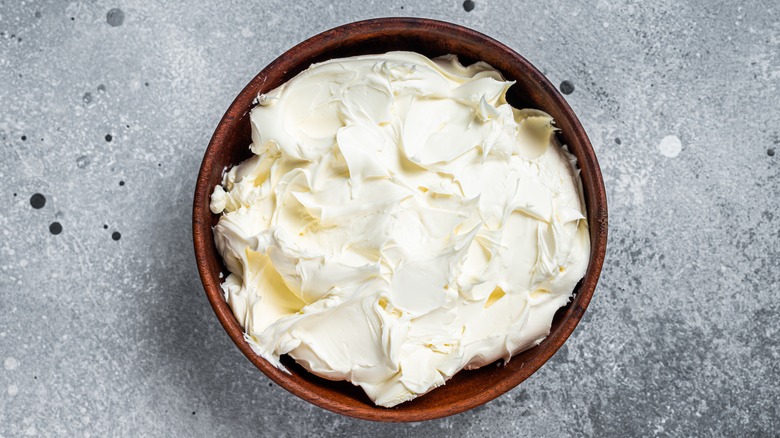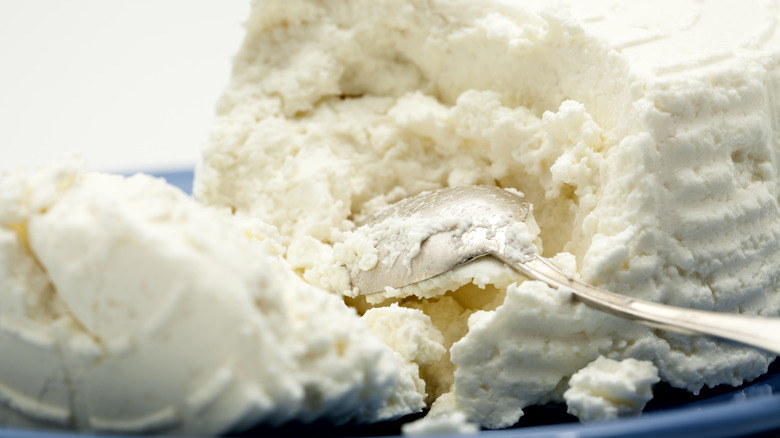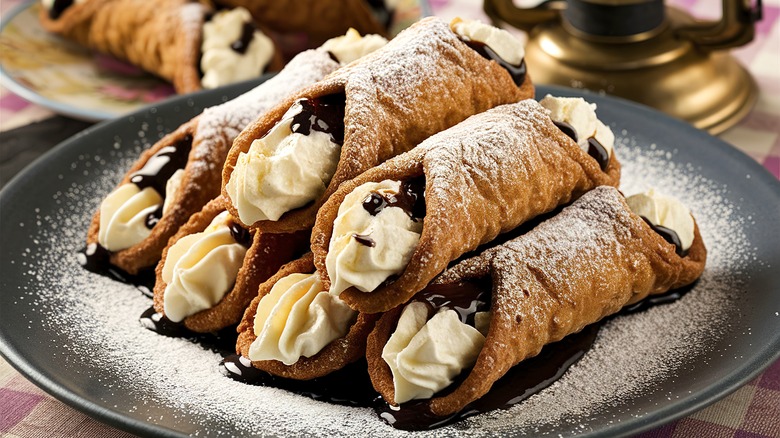Mascarpone Vs Ricotta: What's The Difference?
The world of cheese is often a confusing one. It's easy to mistake mozzarella for burrata and burrata for bocconcini, or even feta for goat's cheese and camembert for brie. Parmesan is wrongfully presumed to be the same thing as Parmigiano-Reggiano, and cheese curds are commonly mixed up with cottage cheese. It's all rather befuddling!
Then there is the matter of mascarpone and ricotta – two soft Italian cheeses that have a similar whitish hue, plush texture, and spreadable consistency. Most commonly, mascarpone is slathered into tiramisu, whereas ricotta is piped into deep-fried cannoli and layered into lasagna. Because they are so similar, the two fresh cheeses are often used as substitutes for one another in recipes.
The biggest difference between mascarpone and ricotta is their taste. Whereas the former has a sweet and buttery flavor, the latter is more tart, tangy, and acidic in comparison. The two cheeses also vary in texture. Though both of them are creamy and fairly easy to spread, mascarpone is far more thick, smooth, and velvety. Often called the Italian version of cream cheese, mascarpone's texture is as luscious as butter or whipped cream. On the flip side, ricotta has a certain graininess to it which makes it slightly less spreadable than mascarpone, and it all has to do with how the cheese is made.
Mascarpone and ricotta are made using different methods
Mascarpone has a rich, thick, and dense consistency because the cheese is made from fresh, high-fat cream. This cream is heated and coagulated using acid (usually citric acid or tartaric acid), until the butterfat separates from the rest of the liquid, aka the whey, and thickens up. The whey is then strained off, leaving only the mascarpone behind, which can have a butterfat content as high as 75%.
Ricotta, on the other hand, is technically not a cheese –it's a byproduct of the cheesemaking process. It is made by adding more acid to the whey that's leftover from making other cheeses, and reheating that liquid until tiny curds form. Ricotta means "recooked" in Italian, and the resulting product is lower in fat than mascarpone and is more moist, light, and curd-like than its creamy cousin.
Ricotta can be produced from the whey of any animal milk, though cow's milk is most popular in the U.S. The type of milk does affect ricotta's flavor, and the kind made from cow milk tastes more subdued than other types. The cheese used to fill cannoli is traditionally made from sheep's milk and is sweetened and blended to give it that fluffy consistency. There are also differently-made varieties of ricotta. For instance, ricotta salata tastes saltier and is dried and pressed into a more crumbly consistency, whereas ricotta forte has a punchier flavor because it is aged for a year.
How to substitute ricotta and mascarpone for one another
Mascarpone and ricotta can be substituted for each other if you're in a pinch, but there are some things to factor in. When using mascarpone in place of ricotta, consider thinning the cheese with some milk or even water to lighten it. It's also best to reduce any other sources of fat, like butter, that you add to the cheese, since mascarpone is considerably more rich.
Keep these things in mind, and mascarpone can be an especially great ricotta alternative when making lasagna. However, it might not always be the best substitute in dishes that depend on the cheese being as airy as a cloud. In such cases, cottage or goat's cheese can quickly come to the rescue instead, though they will be saltier than ricotta.
Similarly, ricotta too can be used instead of mascarpone, but make sure to strain the excess moisture from it first. You could also churn it in a food processor to make it more creamy, and add a splash of whipping cream to give it a more luscious consistency. That said, the tarter ricotta may not always work if your dish depends on mascarpone's milky sweetness. In such cases, you might find that mascarpone's French and English cousins, crème fraîche and clotted cream, are much better fits.



